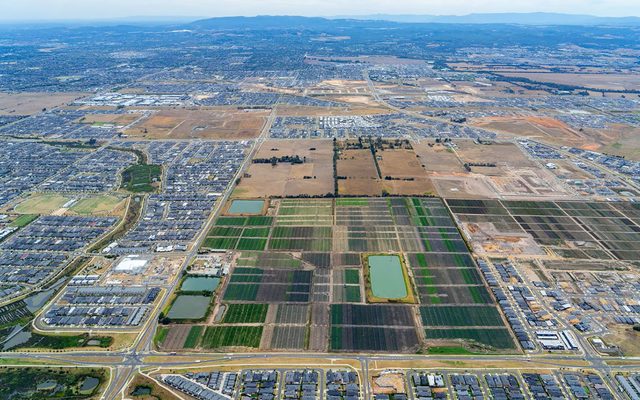This article is from the Australian Property Journal archive
METROPOLITAN house prices in Victoria have made a surprising recovery in the second quarter of 2012, however total sales have declined by 20%, according to the highly respected Municipal Group of Valuers' two-yearly (biennial) valuations.
The MGV and Australian Property Institute Victorian Division, launched the 2012 valuations which shows the quarterly metropolitan median house price has increased from $470,000 in the first quarter of 2012 to $474,000 — which is almost on par with $476,000 in the fourth quarter of 2009, when interest rates were at their lowest level in almost two decades, which fuelled demand.
Since the last valuation conducted in 2010, Metro house prices have had a rollercoaster ride over the past two years. The MGV found metro house prices fell to $466,000 in Q1 2010 before surging to $500,000 in Q2 2010 and peaking at $522,500 in the Q4 2010 – at the same time interest rates rose steadily from a low of 3.75% in December 2009 to 4.75% in November 2010.
After peaking in Q4, prices have steadily soften and eventually landed at a low of $470,000 in the Q1 of 2012.
On the other hand, the MGV found the value of country properties has risen steadily since Q1 2010 from $267,000 to $275,000.
However the recovery in house prices is not reflected in transactions, MGV found total sales have declined significantly, from approximately 88,115 home sales in 2009 to 70,999 in 2011.
So far in 2012, 35,300 home sales have been recorded.
Overall the MGV revalued 2,686 million properties in 2012, up 100,000 from 2010. The lion share was in residential properties, which accounted for 2.3 million assessments totalling $1.083 trillion up from $976 billion.
There were 147,000 commercial property valuations, and values were by 8.8% from $136 billion to $148 billion, whilst industrial values increased from $58 billion to $62 billion across 72,000 properties. Rural property values put in a stellar performance, rising 11.5% from $87 billion to $97 billion.
Valuer General Rob Marsh stressed that the increase in residential property values does not necessarily translate to an increase in council rates.
API Victorian president Justine Jacono said the rates are set by local councils according to their annual budget.
For example a property in Boroondara Council where the valuation base is Capital Improved Value, the calculation for a property worth $900,000 would be:
Capital Improved Value $900,000
Rate in dollar 0.001617 cents
$900,000 x .001617 = $1,455.30
And a property in Stonnington Council with the same value of $900,000:
Capital Improved Value $900,000
Rate in dollar .001142 cents
$900,000 x 0.001142 = $1,027.80
Meanwhile the latest Australian Bureau of Statistics’ House Prices Index shows established home values rose by 0.5% in the June quarter, following its fall of 0.1% in the March quarter. This is first quarterly rise since December quarter 2010.
In the past year, prices have fallen by 2.1%, compared with a 3.5% fall in the year to the March quarter.
House prices rose in five capital cities in the quarter, led by a 5.1% jump in Darwin and a 1.4% increase in Sydney.
Prices fell by 1.4% in Canberra and by 0.4% in Melbourne and Hobart.
In the past year, prices have fallen everywhere except Darwin and Perth, where they are up by 12.3% and 1.1% respectively. Annual price falls range from 0.9% in Sydney to 4.8% in Melbourne.
Project home prices rose by 0.2% in the June quarter after a flat result in the March quarter, to show a year-to rise of just 0.2%, the smallest increase for 15 years. The range in the quarter was from a 1.7% fall in Hobart to 1.1% gains in Sydney and Darwin.
In the past year, the range of price changes for project homes is from -1.4% in Melbourne and Hobart to +2.2% in Darwin. Project home price changes relate only to the price of the dwelling (that is, they exclude any change in land value). Accordingly, they are most affected by the cost of construction.
BT Financial chief economist Chris Caton said the ABS has released for the first time an experimental price index covering the price of other dwellings (flats, units, apartments and semi-detached houses) in the eight capital cities.
“At the moment, this series goes only as far as the December quarter of 2011. Over the course of 2011, this index fell by 3%, compared with a 4.4% fall in the established house price index.
“This release constitutes one more piece of evidence that the decline in house prices is at or close to an end,” he concluded.
Property Review



